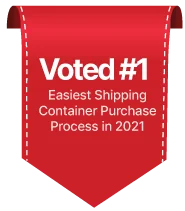Introduction to the cost of metal shipping containers
One of the biggest questions you might have is, “How much do metal shipping containers cost?“
There are several different factors to consider when determining this. These factors include the size, condition, and customization options.
Learn more about the factors that determine shipping container costs in this article. Then, make an informed decision.
We hope these tips will help you make the right decision. After all, the price of a shipping container is an important consideration for any business.
Cost of steel shipping container
The price of a steel shipping container can vary greatly depending on several factors. The cost of steel is the most obvious and has the largest impact on shipping container prices, while the availability of a storage unit is the next most important factor.
There are a number of factors that affect the price of a storage unit, including the season and the economic state of the area. The steel price is another important factor because it can either influence the price of the storage unit or lower it.
The cost of a steel shipping container varies depending on its size. A small container may cost as little as $1,400, while a larger container will run you between $1,500 and $6,100.
Prices vary from $131 a month to $2,562 a month, but it is worth noting that shipping costs vary widely with the price of steel. If you plan on storing the container for a long period of time, you should opt for a larger one.
The cost of a steel shipping container may be higher in the long run, but it is worth noting that you can find them at a cheaper price.
While mild steel is still used in the manufacturing of shipping containers, more modern types of steel are used, such as Corten. The latter is made of carbon-enriched steel and is more corrosion resistant.
Corten equivalents are more expensive than mild steel, but they are still certified for overseas shipments. They also cost an average of $200-300 more than WWT. When you consider the cost of a steel shipping container, make sure to check its dimensions and condition.
Size of container
The standard length and width of a metal shipping container are six meters (20 feet) or twelve meters (40 feet).
Choosing a shorter container is more affordable than larger ones, and smaller containers are easier to transport. However, the limited floor space of a shorter container limits its use.
The dimensions of a 20-foot container are 6.058 meters long, 2.438 meters wide, and 2.591 meters high. The container weighs about 2.4 tonnes.
Despite the standard dimensions, these measurements may vary slightly between different manufacturers.
The empty weight of a container is determined by the container’s construction. The container’s Gross weight is its maximum weight, while its Payload is the total weight of the cargo and contents.
Because container dimensions vary between units and cut-down versions, it is impossible to determine the exact size. In addition, the dimensions and weight of a container may vary significantly.
Nonetheless, it is possible to find a container that matches your specific needs and specifications.
The most common type of container is the standard container, which is typically made of steel. Although it is possible to find aluminum containers, they usually have a slightly higher payload.
Like the standard container, these containers are airtight and water-resistant, and one end is equipped with doors for storing cargo.
Standard container sizes range from 20 to forty feet in length, with capacities varying between operators. Some containers may also be larger than others.
When shipping goods, the standard dimensions are twenty feet long and forty feet wide. In some cases, they are longer than the standard. Some container companies allow for a smaller container by adding a short side.
A 20-foot container, on the other hand, has an internal height of eight feet six inches. This means that it can hold nearly three tons of goods. However, this doesn’t mean it’s the only type of container available.
Condition of container
There are three main types of metal shipping containers: new, one-trip, and used.
One-trip containers are not brand-new but are used for only one journey across the ocean. They will show some signs of use but will have fresh paint and minimal dents or rust.
These are the best choices for those who want a cheap, clean shipping container with the most exterior appeal. However, be aware of the disadvantages of buying used shipping containers.
Moisture is the enemy of steel. To prevent rusting, any areas where water collects must be drained. If water collects on the roof or doors, it can cause dents and deformations.
In addition, moisture can cause condensation. This will eventually damage the structure of the metal. When you buy a new container, make sure to check the condition of the old one before you make the purchase.
Always check the condition of the metal shipping containers before you purchase them.
Non-structural rust is another major concern for metal shipping containers. It can negatively impact the container’s aesthetics, its resale value, and your company’s image.
Consequently, companies should exercise vigilant maintenance and take care to deal with problems as they arise. If rusting occurs, the container may not be able to function in the future.
However, companies should make sure to maintain their metal shipping containers properly and keep them safe from potential damage.
In addition to moisture, metal shipping containers are exposed to various conditions at sea. They are exposed to many corrosive elements and undergo physical damage while loading.
Any damage that damages the container will require costly repairs. Ultimately, damaged shipping containers pose a serious safety risk for cargo. And as long as there is water in the shipping container, it will be corroded in no time.
In addition to the danger of rust, a metal shipping container must be kept dry and free of condensation.
Customization options
When it comes to metal shipping containers, there are several options for customization. While building a warehouse for storing goods can be costly, purchasing Conex boxes is a cheaper alternative.
Some companies even customize these boxes to meet the company’s needs. They can add more doors and brand colors to their containers. Many companies in Kentucky, Arkansas, and Alabama offer this kind of option.
These companies are able to advise customers on the different customization options available. The company you choose should be able to help you choose the best container for your needs.
Modifying metal shipping containers can give you a variety of benefits. Modified containers offer a secure workspace and a comfortable living area. These modular units are mobile and often don’t require a foundation.
In addition to these benefits, they provide extensive customization options. You can install electrical components to give the container a more custom look. There are even options to add awnings to the container for added security.
And if you’re in the market for a custom container, consider a few things to keep in mind.
Firstly, there are several standard sizes of custom shipping containers. The most common are 20′ and 40′ long and eight’ wide. You can also customize the container’s walls or place several containers together to make a large container.
Customizing a shipping container will give you a unique workspace or private office space. They’re versatile and can support up to 213,000 lbs. of weight, so it’s important to find the right option for your needs.
In addition to customization options, industrial metal storage containers can be customized to meet specific application needs.
For instance, a collapsible container may be easier to transport than a traditional one, or it may need to carry a heavy load. You can choose from a variety of metals for your storage containers, such as steel.
Steel containers offer superior corrosion resistance and withstand harsh conditions. They also have more flexibility when it comes to customization and can provide a more customized option than a traditional permanent structure.
The average lifespan of a container
When properly maintained, a metal shipping container can last as long as 25 years. Typically, these units are placed in temperate, calm environments, so rust formation is unlikely. Although corrosion can occur, marine-grade steel is a good choice for shipping containers.
It is durable and will resist rust for decades. Proper refurbishment can increase the lifespan of a container. Shipping containers can also last up to 30 years, depending on the conditions.
However, it’s important to remember that any shipping container is subject to damage during transport. Exposure to heavy rains or seawater can cause rusting.
Even anti-corrosion coatings won’t protect against the effects of saltwater, which can corrode metals, and can eat through protective paint and other materials. Luckily, many suppliers offer inspection services.
If you don’t, make sure you’re working with a reputable company that will take care of the inspection and repair.
While used shipping containers will typically last 10 to 12 years at sea, they can still last for decades once they’re retired from cargo ships. This makes them a great investment, and if you take good care of them, they can last 30 years or more.
The average lifespan of a metal shipping container will depend on the use it has received and the environment in which it's placed. But if it's maintained correctly, it can last for 50 years.
Regardless of where you live, a shipping container can be a great option for housing. The structure of shipping containers makes them highly durable and should last for at least 25 years – if well cared for.
Proper maintenance, siding, and other features will increase the longevity of the container. Rust is the number one issue and it’s essential to treat and repair it before it corrodes further. If you’re lucky, you can expect your container to last for decades without requiring extensive repairs.






 147 People have requested shipping container pricing this week through TheShip
147 People have requested shipping container pricing this week through TheShip